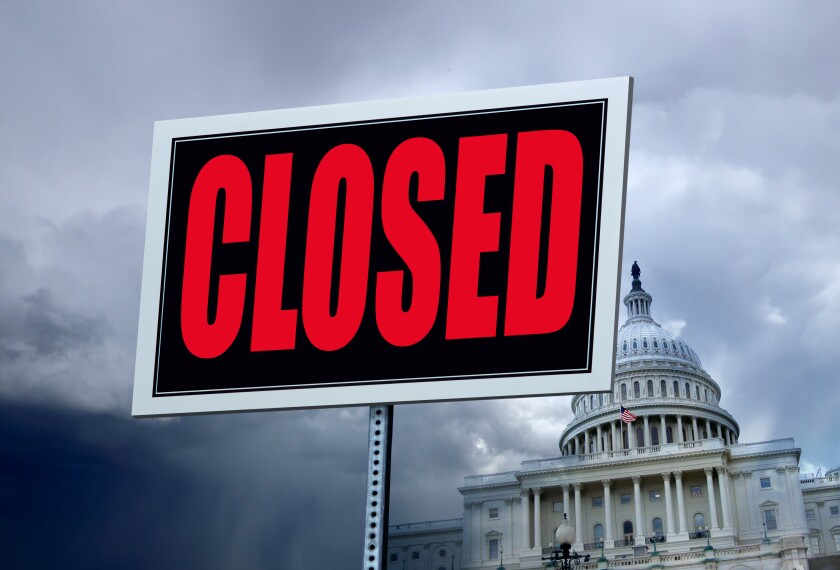
The Stagnant State of Affairs: A Nation Held Hostage
Thirteen days in, the federal government’s paralysis deepens, thrusting the nation into its third week of a self-inflicted crisis [5], [7]. What began as a legislative failure to pass a spending bill on October 1 has cascaded into widespread disruptions, shuttered institutions, and mounting anxieties for countless Americans [3], [4]. This ongoing impasse, a familiar and regrettable pattern in Washington, continues to exact a heavy toll on public services and the lives of federal employees [3], [10].
The Human Cost: Federal Workers Left in Limbo
The most immediate and profound impact of this shutdown is felt by the hundreds of thousands of federal workers caught in the political crossfire [5]. Many have been furloughed or temporarily laid off, while essential personnel are forced to work without pay, facing significant stress, debt, and a profound lack of financial justice [1], [3]. Despite President Trump’s directive to Defense Secretary Pete Hegseth to ensure military personnel are paid by October 15, other federal employees will not see a paycheck until this shutdown ends [1].
Adding a harsh new dimension to this ordeal, approximately 4,000 civil-service workers were notified of layoffs on October 10, signaling a more severe outcome than mere furloughs, with warnings of more job losses to come [7]. Even highly specialized agencies are suffering; numerous workers at the Centers for Disease Control and Prevention (CDC) and the National Institutes of Health (NIH) have been furloughed, directly impacting ongoing research projects vital to public health [5], [9].
Cultural Institutions and Public Spaces: Gates Shut, Parks Neglected
One of the most visible signs of the shutdown’s grip has been the closure of many of the nation’s treasured cultural landmarks and public recreational areas.
Smithsonian and National Zoo: From Open Doors to Locked Gates
The Smithsonian Institution’s 19 museums and the National Zoo, beloved attractions for locals and tourists alike, finally closed their doors on Sunday, October 12, after operating for nearly two weeks on leftover funds from previous fiscal years [1], [4], [5], [7]. This abrupt closure, marked by signs taped to doors and disappointed visitors, includes iconic sites like the National Museum of Natural History and the National Air and Space Museum [1], [4]. The National Gallery of Art has also closed, its sculpture garden displaying signs notifying the public of the federal government shutdown [4], [9]. Even the popular panda cam at the National Zoo has gone offline, though assurances have been given that the animals continue to receive proper care and feeding [7].
National Parks: A Mixed Bag of Access and Neglect
The shutdown presents a complex situation for national parks, with the majority facing closures or severely limited services [2], [3]. While open-air sites such as lookouts, trails, campgrounds, and memorials, including the National Mall in Washington, D.C., may remain physically accessible, visitors should not expect federal staff or maintained facilities [2], [6], [8]. This lack of essential services means locked bathrooms, accumulating litter, and overflowing trash cans, creating unsanitary and potentially unsafe conditions [2], [6], [8].
Previous shutdowns offer a cautionary tale; during the 2018-2019 impasse, unstaffed national parks suffered vandalism and looting at historical sites, highlighting the risks of neglecting these national treasures [9]. With over half of the National Park Service’s employees placed on leave, critical services like trash collection and road repairs have ceased, further degrading these public lands [6], [9].
Behind the Scenes: Disruptions to Essential Services
Beyond the visible closures, the shutdown is quietly eroding the functionality of various critical government services, impacting everyday life in significant ways.
Air Travel Chaos: Strained Systems and Delayed Flights
The nation’s air traffic control system is under increasing strain, leading to a growing number of airline flight delays across the country [5], [7]. Staffing issues, exemplified by problems at Phoenix’s Sky Harbor Airport, are directly contributing to these disruptions, underscoring the vital, often unseen, role federal employees play in maintaining essential infrastructure [7].
Housing and Loans: Bureaucratic Bottlenecks
For those navigating the complexities of housing and homeownership, the shutdown introduces new hurdles. The Federal Housing Administration (FHA) is operating with limited staff, which can lead to delays in the processing and closing of FHA-insured loans [2]. While FHA underwriting and processing requirements remain in force, the extended duration of the shutdown intensifies these potential delays [2]. Other housing programs, like Single Family Housing loans (excluding Home Equity Conversion Mortgages and Title I loans) and Multifamily Housing closings, continue under specific conditions if commitments were made prior to the shutdown [8]. The Fair Housing and Equal Opportunity (FHEO) department maintains access to the Line of Credit Control System (LOCCS) and can recall staff for emergencies, but overall capacity is reduced [8].
Public Health and Safety: Increased Risks
With federal operations curtailed, the administration has suspended routine inspections across various sectors, posing an increased risk to public health and safety [6]. These often-unseen but crucial government functions, from food safety inspections to environmental monitoring, are being compromised, potentially endangering communities [10].
Vulnerable Populations and Critical Programs: The Domino Effect
The shutdown’s consequences ripple through society, particularly affecting vulnerable populations and critical social programs.
Immigration Courts: Mounting Backlogs
The cessation of many government functions has had a severe impact on the justice system, with over 86,000 immigration court hearings canceled [6]. This massive disruption exacerbates already existing backlogs, further delaying due process and adding to the immense pressure on the immigration system [6].
Food Assistance and Pre-school Programs: Essential Lifelines at Risk
Essential services designed to support low-income families and children are also under threat. Federally-funded pre-school programs and vital food assistance initiatives have either been reduced in scope or entirely closed [9]. The Temporary Assistance for Needy Families (TANF) program faces suspension in some states, putting countless families and children at significant risk during this period of uncertainty [6].
Delayed Benefits and Applications
Beyond these critical programs, the general public faces a range of inconveniences, from delays in processing passport applications and small business loans to disruptions in accessing other government benefits [10]. While the US Postal Service remains unaffected due to its independent funding, ensuring mail delivery and open post offices, many other vital functions are grinding to a halt [9].
Economic Fallout and the Road Ahead
The economic ramifications of this extended shutdown are increasingly concerning. Economist Michael Feroli of JPMorgan estimates that each week of reduced government activity shaves 0.1 percentage point off annualized GDP growth [10]. The current situation, with threatened layoffs and actual job losses, carries a greater risk to the labor market and consumer spending than previous shutdowns [10].
Despite the widespread impact and growing public frustration, ending a government shutdown is not a unilateral presidential power [6]. It requires Congress to pass, and the President to sign, the necessary appropriations bills to fund the shuttered departments and agencies [6]. As the stalemate drags into its third week, the political duel remains acrimonious, leaving millions to bear the brunt of Washington’s dysfunction [5]. The nation watches, waiting for a resolution that seems perpetually just out of reach, as the costs continue to mount.
Sources & Footnotes
- https://www.cbsnews.com/live-updates/government-shutdown-2025-latest-house-senate-trump/ ↩
- http://elfreth.house.gov/services/impact-government-shutdown ↩
- https://usafacts.org/articles/everything-you-need-to-know-about-a-government-shutdown/ ↩
- https://www.cnn.com/politics/live-news/trump-government-shutdown-news-10-12-25 ↩
- https://www.cnn.com/politics/live-news/trump-government-shutdown-news-10-13-25 ↩
- https://carbajal.house.gov/shutdown/ ↩
- https://www.usatoday.com/story/news/politics/2025/10/13/federal-government-shutdown-day-13-trump-live-updates/86626926007/ ↩
- https://www.ncsl.org/in-dc/federal-government-shutdown-what-it-means-for-states-and-programs ↩
- https://www.bbc.com/news/articles/crrj1znp0pyo ↩
- https://www.brookings.edu/articles/what-is-a-government-shutdown-and-why-are-we-likely-to-have-another-one/ ↩

Leave a Reply